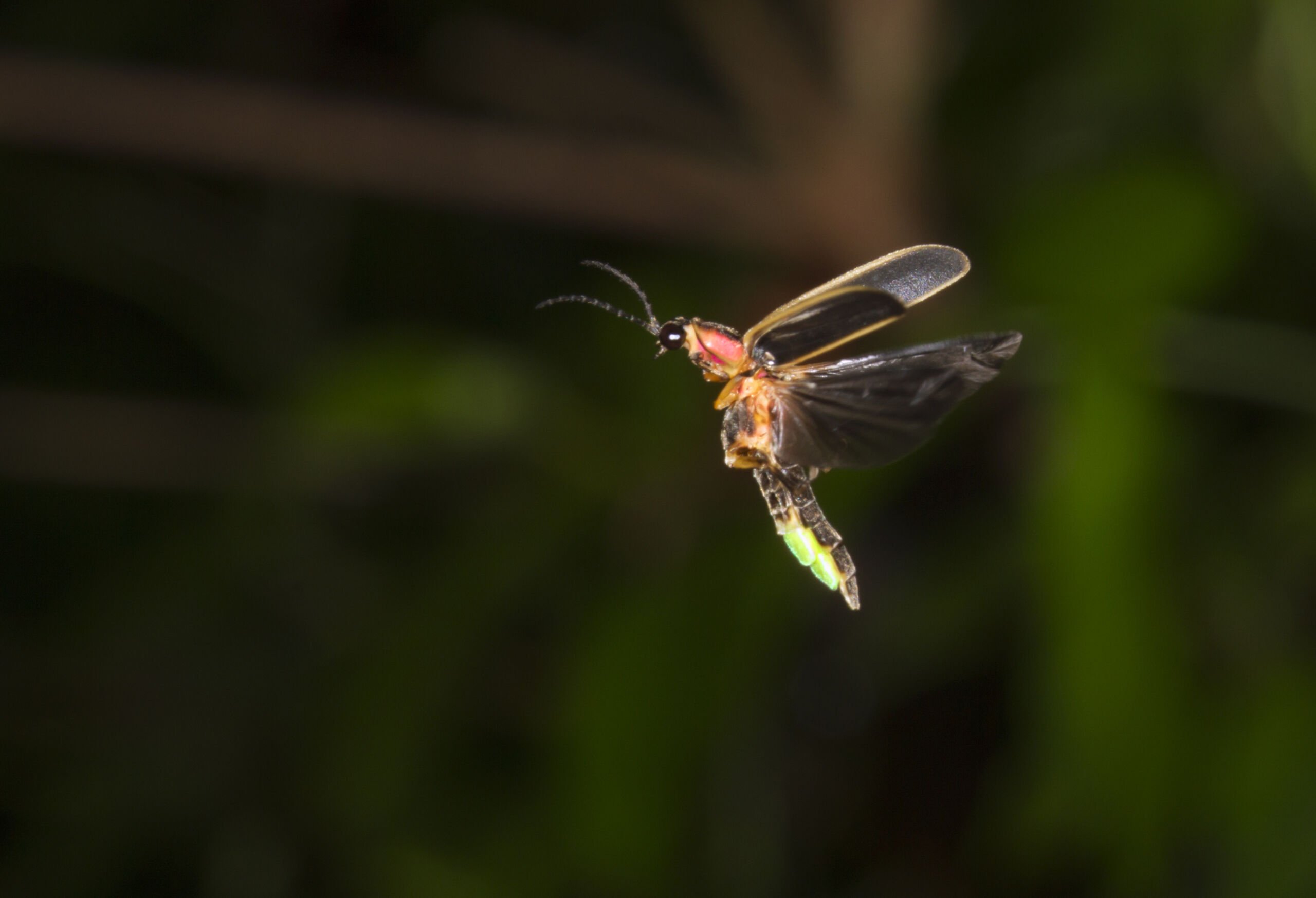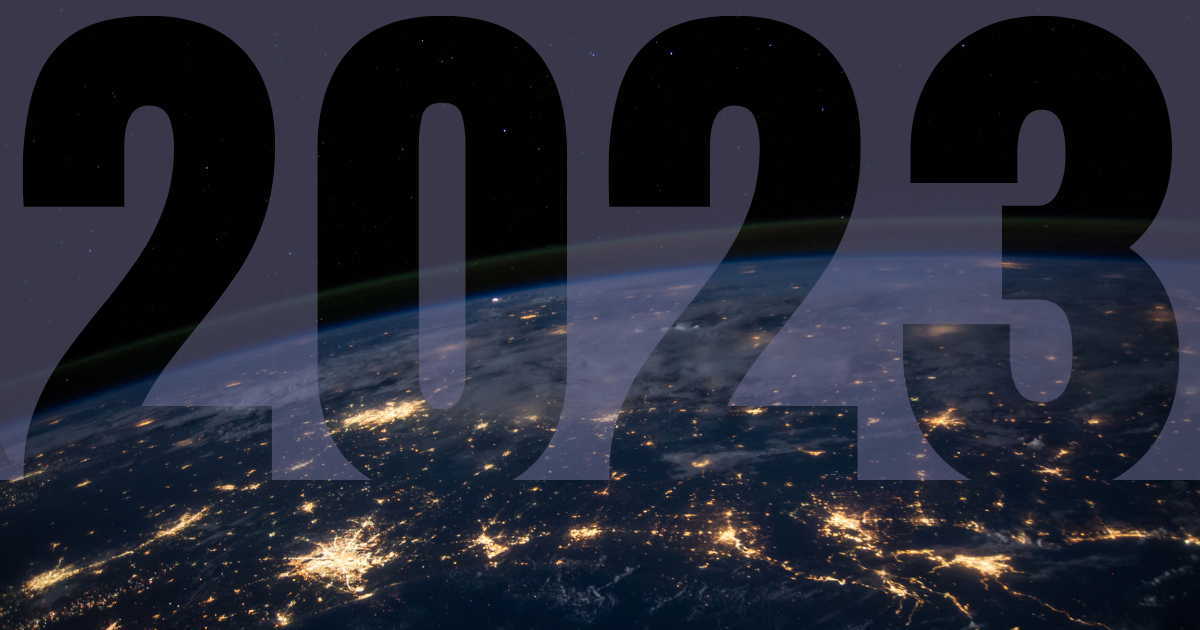
Fireflies Need the Dark to Talk with Light

The Effects of Light Pollution on Fireflies
As light pollution spreads across our planet, we have to venture to more remote areas to enjoy the night skies. This is a minor inconvenience compared to the impacts of light pollution on other species, which can affect their ability to simply survive and reproduce.
Although there is a lot more to learn about the issue, growing evidence suggests that light pollution may contribute to the decline of firefly populations across the globe. Found on every continent except Antarctica, fireflies belong to the beetle family and number over 2000 species. Through the process of bioluminescence, “fireflies emit light mostly to attract mates, although they also communicate for other reasons as well, such as to defend territory and warn predators away.” 1
Habitat destruction and increased pesticide use may also be factors in the decline in firefly numbers. Several organizations enlist citizen scientists to help count these flashing insects each season, including Firefly Watch, a project of the Boston Museum of Science. Clemson University offers a mobile app for counting the nocturnal insects through the Vanishing Firefly Project. Volunteers also helped count fireflies in the city of Turin, in Northern Italy. In this study, “analysis of the landscape around the study areas showed a negative correlation between the extent of urbanization and fireflies abundance.” 2
Scientists in Maryland focused specifically on the effects of light pollution on fireflies; in the presence of artificial light, they found an almost 50% decrease in firefly flashes per minute. 3 Similarly, an experiment in Virginia studied the effects of artificial light on the interactions between tethered females and free-flying males, and found “that light pollution reduces flashing activities in a dark-active firefly species (Photuris versicolor) by 69.69 % and courtship behavior and mating success in a twilight-active species (Photinus pyralis).” 4 In an article about the study, University of Virginia environmental sciences professor Kyle Haynes noted that ‘LED bulbs emit light at all wavelengths, like sunlight, and this type of light may be more disruptive to nocturnal wildlife than the older outdoor light bulbs, such as sodium streetlights, which emit light at fewer spectral wavelengths. The new bulbs are more energy-efficient, but unfortunately may be disruptive to organisms.’ 5
Unfortunately, our nighttime lighting decisions seem to be affecting the ability of fireflies to communicate and reproduce. In the film Brilliant Darkness: Hotaru in the Night, Dr. James Lloyd “equates the potential disappearance of fireflies to a ‘canary in a coal-mine’, highlighting the environmental dangers posed by current practices in artificial night lighting.” 6 Others have noted that fireflies play a unique role in our lives, contributing to the beauty of the night and opening our eyes to the wonders of nature.
Concerned with both the ecological and cultural effects of declining firefly populations, participants from 13 countries met at an International Firefly Symposium and drafted The Selangor Declaration, which advocates for more research and education about these issues.
If we want our grandchildren to be able to enjoy fireflies too, we must protect our skies from light pollution now. People who live away from the city lights can help fireflies talk to each other by using fewer exterior lights and turning lights off when they aren’t needed. City dwellers can enjoy flickering fireflies and countless constellations at International Dark-Sky Parks, like Big Cypress National Preserve, in Florida. And everyone can advocate for the creatures of the night by supporting research about the effects of light pollution. Because according to James Fischer, of The Zoological Lighting Institute, “as flies the firefly, so goes the night.” 7
1. Facts About Fireflies. Retrieved from http://www.firefly.org/facts-about-fireflies.html
2. Picchi, Malayka Samantha & Avolio, Lerina & Azzani, Laura & Brombin, Orietta & Camerini, Giuseppe. (2013). Fireflies and land use in an urban landscape: The case of Luciola italica L. (Coleoptera: Lampyridae) in the city of Turin. Journal of Insect Conservation. 17. doi:10.1007/s10841-013-9562-z.
3. J. Costin, Kevin & Boulton, April. (2016). A Field Experiment on the Effect of Introduced Light Pollution on Fireflies (Coleoptera: Lampyridae) in the Piedmont Region of Maryland. The Coleopterists Bulletin. 70. 84-86. doi:10.1649/072.070.0110.
4. Firebaugh, A., & Haynes, K. (2016). Experimental tests of light-pollution impacts on nocturnal insect courtship and dispersal. Oecologia, 182(4), 1203-1211. doi:10.1007/s00442-016-3723-1
5. Samarrai, Fariss (2016). Researchers study effects of artificial light on fireflies. Retrieved from https://phys.org/news/2016-08-effects-artificial-fireflies.html#jCp
6. 2014 International Firefly Symposium Program & Abstracts Book (2014). Retrieved from http://www.conference.ifas.ufl.edu/firefly/Program%20BOOK%202014.pdf
7. See note 6.



















